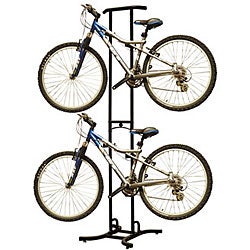Bike Clinic
Our office is proud to offer bicycle clinics on campus so that any ECU faculty, staff and student that has a bike can enjoy the benefits of services provided during onsite workshops to include:
- Brake Adjustments
- Tire Inspections
- Lubrication of Chains
The workshops will tentatively be held on Wednesdays from 2pm to 6pm behind the Main Campus Student Center. If it’s raining, services will still be provided in the same area. The fall workshops will run during the months of September – November and the spring workshops will run from March – May.
If further repairs are needed that cannot be provided during the allotted times for the free campus workshops, then our staff will recommend individuals to make additional appointments with a local bicycle shop that will be the most cost efficient for them. Applicable fees will apply for any additional appointments.
Stop by and have your bike checked.

Bike Maintenance
Brakes: Noises can be a dead give-away. Squeals and scrapes are the most common noises which can be fixed. They squeal from pads hitting the rim flat. Toe in brake pads to stop noises. Scraping means you need to either sand the metal out of the pads or replace them. Brakes should be replaced when you get down to about 1/4″ of pad left. Your brakes will hit sooner if you unscrew the barrel adjusters around the housing. You can shorten the reach with a screw that points toward the other brake lever. Inspect brake pads for wear or metal shards.
Chain Care: Regular chain maintenance of your chain doesn’t have to be a lengthy or messy process. If you can see dirt on the outside of your chain you should wipe it down with a clean rag. If your chain squeaks or is excessively noisy, it needs lubrication. Don’t put too much, though. If you can see it, then its too much. Wipe it down with a clean rag.
Tire Pressure: Tires naturally lose air over time. If you don’t pump them up, they will go flat. Skinny tires need air almost daily, while fat tires tend to need air weekly. Use the largest tube that fits your tire, so that it will hold air longer and resist flats better. Check your tire pressure with a gauge before every ride.
General: Bearings should be cleaned and re-greased about yearly, more often if you ride in the rain. Grease crank bolts, but never grease the bottom bracket tapers as you might damage crankarms. Try not to lay the bike down on its derailleurs, because you could damage them. Remove dirt or lube related buildup with a rag and flathead screwdriver. Use sand paper to smooth out the inside of the seat tube to avoid scratching the seatpost. Grease to help keep water out of the frame tubes and to allow easy removal of the seatpost. Turn axle by hand to check hub status. If it feels loose and gritty, clean and re-grease. Riding on hubs with no grease can destroy bearings and races. Most parts on a bike do not need to be as tight as humanly possible, just snug. Grease on threads helps to overcome friction and allow proper fastening.

Storage
Whatever storage system you choose, make sure its well balanced and remains secure when you add your bicycle. It should support the bike above the center of gravity and offer support at two points on the bike frame, not just one wheel. Some bikes have “quick release” wheels that could send it crashing to the floor. Your bike’s wheel rims also might not be strong enough to hold the bike without bending and becoming damaged. It is best to keep it elevated to prevent problems such as flattened rubber tires and cracked sidewalls. Hanging the bike can save you space and extend the tire life. If you can’t hang it, then be sure to check the tires regularly to keep them properly inflated. Make sure that you can also easily get it off the storage rack. If it’s too hard, you probably won’t use it as much.
It’s best to store your bike indoors when possible. Metal-framed bikes that are left in unheated garages can get so cold that rust may form when condensation builds up inside the tubing. Keeping the bike out of direct sunlight is also advisable. The sun’s rays can dry and split the side walls of the tires. Tires will also deflate over the winter, so it’s best to inflate the tires before storing the bike.